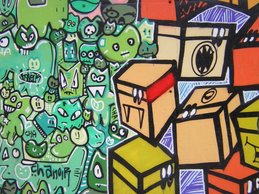NASA and the International Technology Education Association, or ITEA, present the NASA Engineering Design Challenge: Lunar Plant Growth Chamber for the 2007-2008 school year. Elementary, middle and high school students design, build and evaluate lunar plant growth chambers -- while engaging in research- and standards-based learning experiences. Students participate in the engineering design process and learn how to conduct a scientific experiment.
Choose from three ways to participate in the challenge:
1. Design, Build and Evaluate a Chamber
2. Design and Evaluate a Chamber
3. Evaluate a Chamber
Educators who complete the STS-118 Design Challenge with their students can request cinnamon basil seeds that have flown in space on the STS-118 space shuttle mission. Participants will receive space-flown and Earth-based control seeds. Students may use the seeds to test the designs of the lunar plant growth chambers. The seeds will be available on a limited basis.
MEDIA ADVISORY: 07-100
REGISTRATION OPENS FOR NEW NASA ENGINEERING DESIGN CHALLENGE
WASHINGTON - As space shuttle Endeavour and 10 million cinnamon basil seeds are set to launch on a mission to the International Space Station, NASA has opened registration for the Lunar Plant Growth Chamber challenge.
Students participating in the challenge will design and build their own greenhouse chambers to analyze and study plant growth from the space-flown seeds following their return to Earth. Students will conduct classroom experiments that may help NASA find new ways to grow and sustain plants in space and on the moon - a critical need for future
space exploration.
Educators may learn more and register for the challenge at:
http://www.nasa.gov/education/plantchallenge
Seeds will be available to the first 100,000 registrants for the Lunar Plant Growth Chamber challenge. Registrants must be kindergarten through 12th grade educators who are residents of the United States or U.S. territories and outlying areas.
The challenge is a highlight of the flight of NASA's first educator astronaut, mission specialist Barbara R. Morgan, who will travel to the space station on space shuttle Endeavour.
The challenge is part of NASA's Engineering Design Challenge program. The program connects kindergarten through 12th grade students with the challenges faced by NASA engineers who are designing the next generation of space vehicles, habitats and technologies. These hands-on classroom experiments help students achieve national goals in science, math and analytical skills. NASA and the International Technology Education Association co-sponsor this engineering design challenge.
Subscribe to:
Post Comments (Atom)

No comments:
Post a Comment